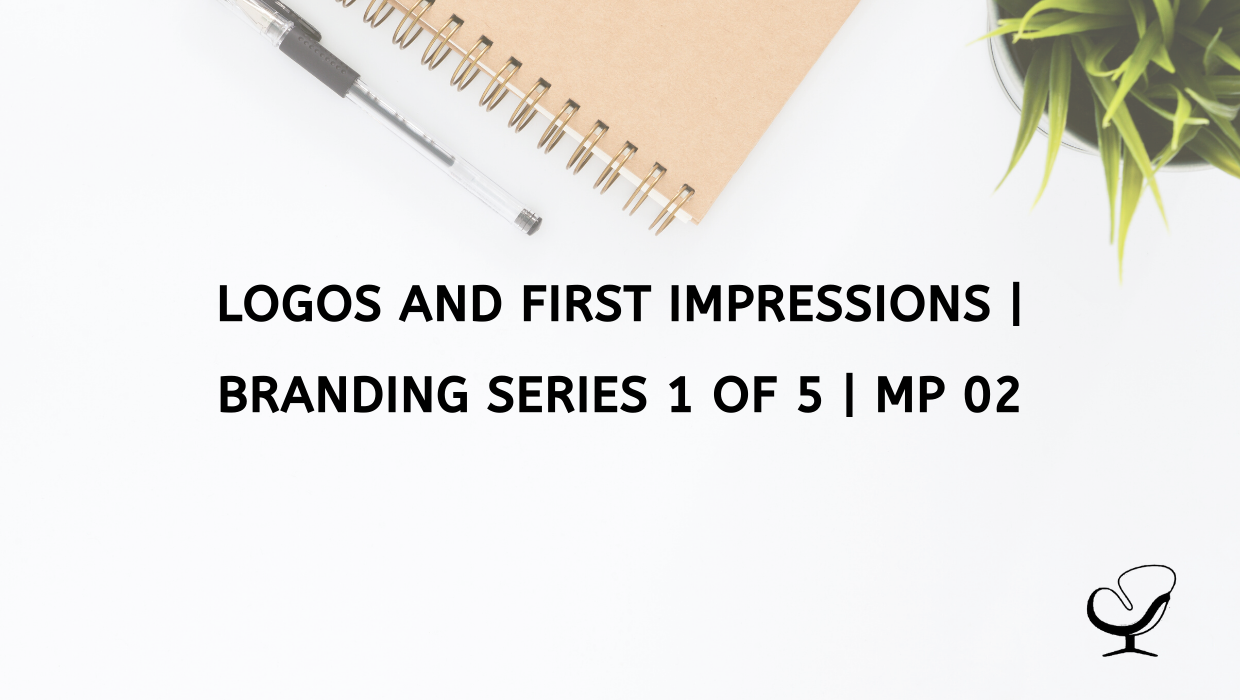Podcast (marketing-podcast): Play in new window | Download | Embed
Why does having a good logo matter? What makes a bad logo? What are the best first impressions in branding?
In this podcast episode, Joe Sanok speaks with Chief Marketing Officer at Practice of the Practice, Sam Carvalho all about logos and first impressions in branding.
Meet Sam Carvalho
 Sam Carvalho is a graphic designer living in Cape Town, South Africa, with over five years of experience in both design and marketing, with a special interest and experience in the start-up environment.
Sam Carvalho is a graphic designer living in Cape Town, South Africa, with over five years of experience in both design and marketing, with a special interest and experience in the start-up environment.
She has been working with Practice of the Practice since 2016 and has helped over 70 therapist entrepreneurs take their practices to the next level by enhancing their visual branding. She loves working with a variety of clients on design-intensive tasks and is always up for a challenge!
Follow Sam on Instagram to see some of her work. To work with Sam, head on over to www.practiceofthepractice.com/branding.
In This Podcast
Summary
In this podcast episode, Joe Sanok speaks with Samantha Carvalho all about logos and first impressions in branding.
Why does having a good logo matter?
A logo is so important as you set your whole entire brand around it. Having a great logo from the beginning is very important and more people should prioritize it.
A good logo gives off a good impression and sticks in your mind. When someone instantly looks at it, they should understand the personality of the brand as well as what they do. It’s the best starting point for your brand.
What is a bad logo?
Many people decide to cut costs when starting a business, and they do that by not properly designing a logo. This could mean designing it in Word or Canva. You can tell because sometimes the chosen font is not exciting. It shows that you haven’t put a lot of effort into your brand and shows that you might not put a lot of effort into your services, either. All in all, it’s not professional.
For a good logo, make sure your name stands out and is legible. A flat-design is more impactful. If it’s too realistic it doesn’t work across the board. Keep it clean, clear, and high quality.
What can help with first impressions of branding?
Set up a brand style guide that you can build around your logo to keep your brand consistent. This consists of your logo, how to use it and how not to use it, as well as variations of it. It builds onto your branding, including your mission and vision of your brand, fonts and color schemes.
What’s great about setting this up from the get-go is that if you change designers, you can send them the brand style guide and they’ll know exactly what to do and what not to do.
A brand style guide should have a maximum of 3 readable fonts. Remember, different colors have different meanings and make people feel different things. Don’t use too many colors, use two or three max, depending on the brand. Think of neutral colors with one color that pops.
Useful Links:
- Introduction To The Marketing in Practice Podcast | MP 01
- Design Services With Sam
- Free resources to help you start, grow and scale
- Join Next Level Practice
- Apply to work with us
Thanks For Listening!
Feel free to leave a comment below or share this podcast on social media by clicking on one of the social media links below! Alternatively, leave a review on iTunes and subscribe!
Podcast Transcription
[JOE]: Well today on the Practice of the Practice podcast we have Sam Carvalho. She is our chief marketing officer here at Practice of the Practice and we’re going to go through five different episodes on a bunch of different topics all around branding. How are you doing today, Sam?
[SAM]: Very well, thanks. And you Joe?
[JOE]: I’m doing awesome. I’ve been really excited to do this series with you because you’re often just behind the, not just behind the computer. You are behind the computer, killing it for our Next Level Practice people, a lot of our consulting clients, doing tons of branding for Practice of the Practice, and now we get to bring you onto the podcast.
[SAM]: Yes, it’s awesome. Thanks for having me.
[JOE]: Yes. Well we’re going to be doing five episodes, so let’s walk through what those five are going to be. They kind of build on each other and so the very first one today is going to be all about logos and first impressions. We’re also going to talk through some brand style guide. Then in episode two we’re going to talk about websites and the user journey. In episode three we’re going to talk about social media, episode four, we’re going to talk about print, rack cards, business cards, banners, all those things print. And then in five we’re going to talk about the full brand strategy. So, let’s kick off this whole logos and first impressions things Sam. Where would you want to start in regards to a logo?
[SAM]: So, I think it’s something that maybe as a branding expert, I prioritize more than the average person. But I just think a logo is super important. And I know that a lot of businesses when they’re first starting out will maybe skimp on the logos, they’ll maybe just kind of do their own design in Canva or in Word or something and then they kind of, but for me, you set your whole entire brand up on your logo. So I would just say that from the onset, even though it might be something that you spend more on than you originally planned, I just think having a great logo from the beginning that communicates your brand and communicates what you want to communicate to the world is just super important and I think more people should prioritize that.
[JOE]: Yes. So, what does a good logo do?
[SAM]: So, for me, a good logo makes a good impression and it’s something that kind of sticks in your mind. So, well, again, for me as a visual person, like when I interact with the brand, if I see straight away that they have a cool logo, like I’ll obviously notice it and it helps me understand the personality behind the brand, and like, yes, what that brand is communicating and what they’re about. I read a lot into logo. Personally, I’m not sure if everybody does, but I think as I said, it’s a starting point for your brand. So, it’s really important to have a good quality logo that communicates what the brand is about.
[JOE]: When you see a bad logo, what are things that a lot of practices will do that are just bad logos? So, you mentioned that maybe they designed it in Word or that they just did it in Canva. What for you do you notice that says that was probably designed in word?
[SAM]: So, for me it’s just picking a font in Word that’s maybe a little bit more exciting than your usual, like hope it’s a go. Something like that. So, it maybe has like a few curves here and there, but it’s still just a font that hasn’t been changed in any other way. So, it’s literally just your name and like a font that’s maybe made bigger with like a color or something. And for me that just says, it just kind of shows not putting a lot of effort into your branding or into your look and feel. So, I feel like straight away I’m put off because from a customer perspective you’re not showing me like you put a lot of effort into your branding and then I’m not sure that you’re going to put a lot of effort into your services.
[JOE]: Yes. So, what are things that go into a good logo that will help people make a good first impression?
[SAM]: So, I think making sure that your name still stands out, like whether you make use of an icon or illustration, making sure that your name is still purely legible. And then I always prefer kind of a flat design, so a more realistic approach. But again, that might just be me, but I think a flat design is more impactful. Something that’s minimalistic rather than kind of taking like a real picture and trying to use that and then, yes —
[JOE]: Let me add to that because I think that I like logos that look good in whatever colors they have, but also if they’re in a white scale or a gray scale or just pure like black, like as kind of a chunk that they work then too. And I feel like when it’s too realistic, then what happens is you’ve got to figure out all this kind of like shading and it just doesn’t translate into just like a white scale or gray scale image.
[SAM]: Yes, exactly. And I actually love designing. When it comes to actually designing the materials, I love using wide logos on the materials. I think that it looks really, really nice because then you can use a white logo on an image like it just gives you a lot more options later on. So yes, I definitely prefer a flat logo design and as I said, a clear name. And then also just making sure that it’s high quality because lot of logos are great logos, but then the designer for whatever reason, hasn’t sent them a high-quality version and they appear blurry on the website or [crosstalk]. Yes, and that’s obviously horrible. So just making sure that it’s clean and clear and high quality.
[JOE]: Awesome. Now other than logos, what are other first impressions that you would say are kind of on that same level as a logo?
[SAM]: So, something that I’ve been trying to introduce recently is something called a brand style guide. So, I would say when it comes to branding or setting up the branding for your business the first point of call would be a logo like we’ve discussed, but then after that would be a brand style guide that you kind of build around your logo. So whatever colors you’ve used in your logo and whatever thoughts you put in your logo with regards to what you’d like to communicate, you take that all and you put it into a brand style guide. So, brand style guide consists of your logo and of ways not to use it and how to use it and variations of your logo. Like maybe with the slogan without the slogan, but then it also includes the mission and vision of your brand. It includes what fonts you’d like to use in future material, like full heading and full body ticks and things like that.
And then it also includes your color scheme and any other imagery or patterns that you would like to be used consistently in your branding that you’re after. And I think it’s a really great way, again, a lot of businesses will only do it like five to 10 years into doing business but then it’s just a mission because then you have to read you all your branding, all your design material. Whereas if you just do this from the get go, then whatever designer you interact with in future. So, if you change designers, you can then just send them your brand style guide and they’ll know exactly what to use and how to make sure that all designs, whether it be print or digital, are consistent with your branding. And that also just helps with like making a big impact and making sure your brand is consistent.
[JOE]: Now when you think about let’s just take fonts, how many fonts should a brand style guide have and what types of fonts? Because my impression as a non-designer is that you should probably have one that’s very readable, very clear, and then if you’re going to use like a cursive font to maybe only have one or two of those. But I don’t even know if that’s right.
[SAM]: So, I’d say like again, I’m a fan of minimalism and keeping it as simple as possible. So, I would say max three. So, I would say having one for your headings, like a really easily legible font for your heading. So, a straight clear font for your headings, but then also cursive alternative because sometimes it’s nice to kind of play around with the curses like the more, yes, because of curly fonts on certain designs. So, I’d say kind of have that as an option but definitely have a standard legible one as your heading. And then you just alternate that full, like your subheadings and even your paragraph text. So, you can say that for your heading it must be bold and it must be a certain size and then for subheadings it can be in a regular and then for paragraph text it can be light. Something like that. But you can introduce another font for your body text if you think, if you want it. But I would say no more than three.
[JOE]: Yes, I know for me, like if I’m at a restaurant and I look at their menu and I see multiple fonts, I just want to get up and leave. It just feels like you didn’t even spend the time to have this menu designed in a way that is really basic.
[SAM]: Yes. And again, it just helps with consistency. People will get to know that when they see that font, that’s your brand. So yes.
[JOE]: Yes. Now talk a little bit about colors because you said brand colors. What do you recommend in regards to how many like pop or accent colors? Yes, talk a little bit about that.
[SAM]: Yes, so I’d say doing some research into like the meanings of colors. I mean, again, it depends on how in depth you want to go because, I mean, I know from like a marketing perspective different colors at different meetings and, kind of cause people to feel different feelings. So, I would recommend kind of doing a bit of research into that, but when it comes to call to actions and things, there’s been research done saying that orange is a good color to go to for buttons, and like that causes people to take action. But I would say as, like four colors as a whole and, again, I wouldn’t recommend using too many, like maybe having two or three as your base and then one that pops out that you can use for call to actions and things like that.
[JOE]: Yes, I love when a website kind of chooses whether it’s going to be more on the white and gray scale or on the kind of brown and khaki as their kind of base colors where it’s just sort of a softish brown versus a white, and then they have just one color that’s their pop color. It feels like a circus when they have too many pop colors going on.
[SAM]: Yes, I’d say definitely making use of the more neutral colors, but again it depends on like the type of brand you are. I mean if you’re trying to attract, you know, if you are counseling kids for example, then you’re all going to make use of a lot of bright colors. So, I think it just depends on the type of brand. But yes, my favorite is also kind of neutral colors as the base and then like one pop color that grabs your attention.
[JOE]: And I think that that is important to start with your ideal client and what they’re looking for and make sure that you start there as well. Awesome. We are going to be talking all about websites and the user journey in the next episode. If you are interested in talking to Sam, hearing more about branding, connecting with her, head on over to practiceofthepractice.com/branding and there’s all sorts of services there that you can chat with Sam about. Sam, we’ll talk to you in the next episode.
[SAM]: Great.
[JOE]: This podcast is designed to provide accurate and authoritative information in regard to the subject matter covered. It is given with the understanding that neither the host, the publisher, or the guests are rendering legal, accounting, clinical, or other professional information. If you want a professional, you should find one.
Special thanks to the band Silence is Sexy. We like your intro music.

